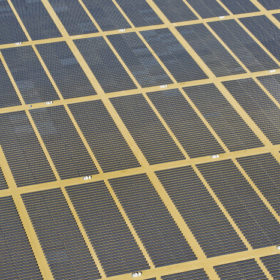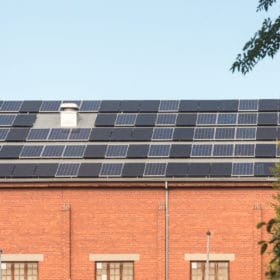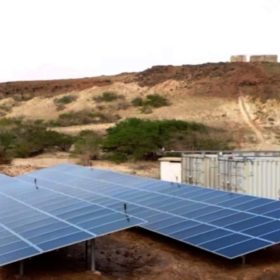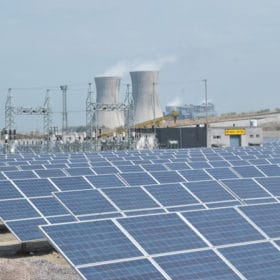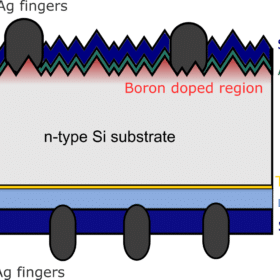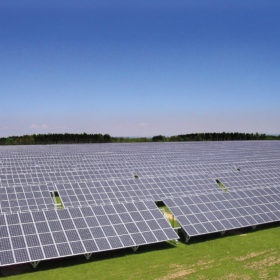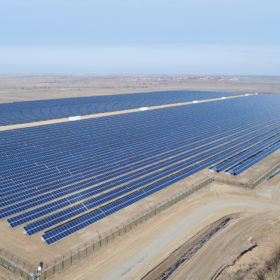Spanish developer plans 1 GW solar plant coupled to 80 MW of storage, 100 MW electrolyzer
Soto Solar has submitted the project proposal to the Ministry of the Ecological Transition and the Demographic Challenge (Miteco). The solar plant could start production in 2023 or 2024 and will have a generation capacity of more than 2,000 GWh/year.
Solliance hits 28.7% efficiency on perovskite/silicon tandem solar cell
The Dutch consortium has achieved the record result by combining, in a four-terminal tandem configuration, an 18.6% efficient highly near-infrared transparent perovskite with a prototype of a c-Si interdigitated back contact (IBC) silicon heteroJunction (SHJ) cell developed by Japanese electronics manufacturer Panasonic. The perovskite cell was also combined with other kinds of solar cells and other remarkable record efficiencies were hit.
SunPower builds two brownfield solar projects in the US
The solar energy projects are expected to offset around one-third of the electric demand of Baltimore’s public buildings.
France publishes second-quarter FITs for PV systems up to 100 kW
The feed-in tariff granted reduces each quarter, in line with how much solar capacity was installed in the previous three-month period.
Colombia to hold renewables auction by the end of October
Project selected in the auctions will be granted a 15-year PPA and will have to begin delivering power in December 2022.
PV-powered desalination system for rural areas
Italian start-up Genius Watter has developed a solar desalination solution that is claimed to be particularly suitable for remote areas with no connection to grid electricity. The system is able to produce up to 1,000 cubic meters of potable water per day at an opex of €0.20 per cubic meter.
India’s NTPC tenders 1 GW of solar capacity, BHEL issues global tender to select module partners
Developers have until May 27 to submit bids for NTPC’s projects anywhere in India. BHEL is seeking module supply partners for an aggregate 750 MW of panels.
Polysilicon passivate junctions getting closer to commercial production of c-Si modules
A new study from Australia has highlighted the potential of polysilicon passivated junctions for revolutionizing the commercial production of crystalline silicon solar panels. It also presented, however, the technical and economic hurdles that must still be removed to ensure its success, including the damage that this technology can produce for the polysilicon layers, due to the cell’s metallization process.
Fraunhofer ISE reveals Spain may host 5 GW module factory
The vertically integrated factory is expected to be located near Sevilla, in southern Spain. The factory will be owned and operated by the newly created company Greenland Gigafactory.
Mounting interest for solar-linked bilateral deals in Russia
Under the current Russian energy regulatory framework, bilateral deals can be concluded between a seller and a buyer with a power distribution company mediating as a third party.


